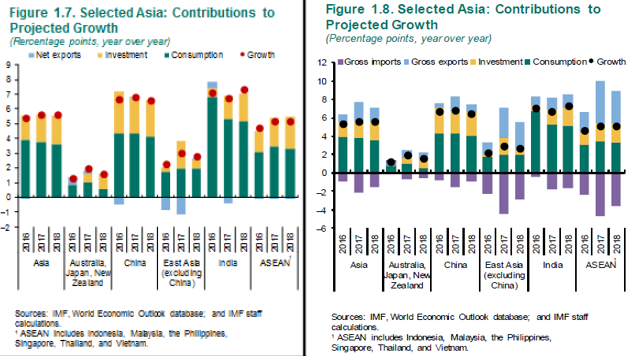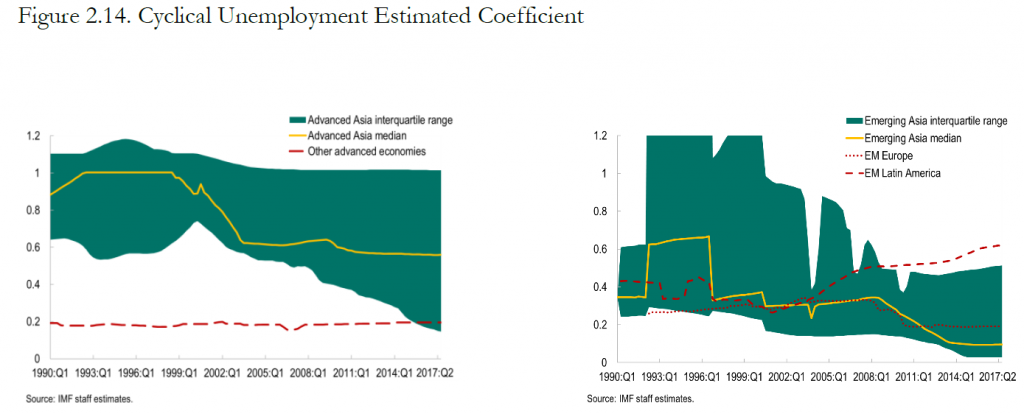Thursday, May 10, 2018
Lawrence R. Klein and the making of large-scale macro-econometric modeling, 1938-1955
From new Documentos CEDE by Erich Pinzón-Fuchs:
“Lawrence R. Klein was the father of macro-econometric modeling, the scientific practice that dominated macroeconomics throughout the second half of the twentieth century. Therefore, understanding how Klein developed his identity as a macro-econometrician and how he conceived and forged macro-econometric modeling at the same time, is essential to draw a clear picture of the origins and subsequent development of this scientific practice in the United States. To this aim, I focus on Klein’s early trajectory as a student of economics and as an economist (from 1938-1955), and I particularly examine the extent to which the people and institutions Klein encountered helped him shape his professional identity. Klein’s experience at places like Berkeley, MIT, Cowles, and the University of Michigan, as well as his early acquaintance with people such as Griffith Evans, Paul Samuelson, and Trygve Haavelmo were decisive in the formation of his idea on how econometrics, expert knowledge, mathematical rigor, and a specific institutional configuration should enter macro-econometric modeling. Although Klein’s identity defined some of the most important characteristics of this practice, by the end of the 1950s, macro-econometric modeling became a scientific practice independent of Klein’s enthusiasm and with a “life of its own,” ready to be further developed and adapted to specific contexts by the community of macroeconomists.” Picture from Nobelprize.org.
Picture from Nobelprize.org.
From new Documentos CEDE by Erich Pinzón-Fuchs:
“Lawrence R. Klein was the father of macro-econometric modeling, the scientific practice that dominated macroeconomics throughout the second half of the twentieth century. Therefore, understanding how Klein developed his identity as a macro-econometrician and how he conceived and forged macro-econometric modeling at the same time, is essential to draw a clear picture of the origins and subsequent development of this scientific practice in the United States.
Posted by at 10:50 AM
Labels: Forecasting Forum, Profiles of Economists
Macroeconomic Forecasting in Germany has changed after the Great Recession?
From a new paper by Jörg Döpke, Ulrich Fritsche, and Karsten Müller:
“Based on a panel of annual data for 17 growth and inflation forecasts from 14 institutions for Germany, we analyse forecast accuracy for the periods before and after the Great Recession, including measures of directional change accuracy based on Receiver Operating Curves (ROC). We find only small differences on forecast accuracy between both time periods. We test whether the conditions for forecast rationality hold in both time periods. We document an increased crosssection variance of forecasts and a changed correlation between inflation and growth forecast errors after the crisis, which might hint to a changed forecaster behaviour. This is also supported by estimated loss functions before and after the crisis, which suggest a stronger incentive to avoid overestimations (growth) and underestimations (inflation) after the crisis. Estimating loss functions for a 10—year rolling window also reveal shifts in the level and direction of loss asymmetry and strengthens the impression of a changed forecaster behaviour after the Great Recession.”
From a new paper by Jörg Döpke, Ulrich Fritsche, and Karsten Müller:
“Based on a panel of annual data for 17 growth and inflation forecasts from 14 institutions for Germany, we analyse forecast accuracy for the periods before and after the Great Recession, including measures of directional change accuracy based on Receiver Operating Curves (ROC). We find only small differences on forecast accuracy between both time periods. We test whether the conditions for forecast rationality hold in both time periods.
Posted by at 10:43 AM
Labels: Forecasting Forum
Wednesday, May 9, 2018
GDP Growth Rate Projection in Asia Pacific
The new IMF Regional Economic Outlook for Asia Pacific says that “Growth in Asian economies has picked up in line with global developments. Asia grew by 5.7 percent in 2017, up 0.3 of a percent from the year before, with the pickup broad-based across the region (Table 1.1). Asia continues to be both the fastest-growing region in the world and the main engine of the world’s economy, contributing more than 60 percent of global growth (three-quarters of which comes from China and India) (Figure 1.6). Consumption and investment continue to be major contributors. The contribution of net exports remained small, but the strong growth of gross exports and imports suggests that the recovery in external demand (both inside and outside the region) was an important driver of GDP growth in Asia (Figures 1.7 and 1.8).”
The new IMF Regional Economic Outlook for Asia Pacific says that “Growth in Asian economies has picked up in line with global developments. Asia grew by 5.7 percent in 2017, up 0.3 of a percent from the year before, with the pickup broad-based across the region (Table 1.1). Asia continues to be both the fastest-growing region in the world and the main engine of the world’s economy, contributing more than 60 percent of global growth (three-quarters of which comes from China and India) (Figure 1.6).
Posted by at 3:46 PM
Labels: Forecasting Forum
Low Inflation in Asia
From the new IMF Regional Economic Outlook for Asia Pacific:
“The main findings are as follows:
- Recent low inflation has been driven mainly by temporary forces, including imported inflation. Phillips curve estimation indicates that weaker import prices, including low commodity prices, contributed to half of the undershooting of inflation targets in advanced Asia and most of the undershooting in emerging Asia in recent years. In addition, China seems to have played an important role in driving both global and regional inflation. More generally, an analysis looking at temporary and trend components suggests that temporary shocks have accounted for the bulk of the recent reduction in inflation.
- The inflation process has become more backward-looking. While inflation expectations are generally relatively well anchored, especially in advanced Asia and in economies with inflation-targeting frameworks, the importance of expectations in driving inflation has declined in recent years with past inflation playing a larger role.
- The sensitivity of inflation to the unemployment gap has declined. There seems to be a flattening of the Phillips curve compared to the 1990s in advanced Asia and a similar but more continuous flattening in emerging Asia. Outside of Asia, the slope of the Phillips curve seems to have been more stable.”
“The main policy implications of the findings are:
- Central banks should be vigilant in responding to early signs of inflationary pressure, including from global factors. A sudden increase in inflation may then persist, and disinflating may be costly if sensitivity of inflation to the unemployment gap has declined.
- It will be important to strengthen monetary policy frameworks and improve central bank communications in order both to increase the role of expectations in driving inflation and to maintain expectations anchored to targets.
- To mitigate the role of imported inflation, exchange rates should be allowed to adjust more flexibly.
- In principle, the monetary policy response to commodity price shocks should be to accommodate first- round effects but not the second-round effects.”
From the new IMF Regional Economic Outlook for Asia Pacific:
“The main findings are as follows:
- Recent low inflation has been driven mainly by temporary forces, including imported inflation. Phillips curve estimation indicates that weaker import prices, including low commodity prices, contributed to half of the undershooting of inflation targets in advanced Asia and most of the undershooting in emerging Asia in recent years. In addition, China seems to have played an important role in driving both global and regional inflation.
Posted by at 3:38 PM
Labels: Inclusive Growth
Tuesday, May 8, 2018
21st-century Indian economists
For a list of 21st-century Indian economists, click here.
For a list of 21st-century Indian economists, click here.
Posted by at 1:09 PM
Labels: Profiles of Economists
Subscribe to: Posts







